O Tannenbaum, o Tannenbaum
wie treu sind deine Blätter!
Du grünst nicht nur
zur Sommerzeit,
Nein auch im Winter, wenn es schneit.
O Tannenbaum, o Tannenbaum,
wie treu sind deine Blätter!
O Christmas Tree, O Christmas tree,
How lovely are your branches!
In beauty green will always grow
Through summer sun and winter snow.
O Christmas tree, O Christmas tree,
How lovely are your branches!
The lyrics to the above Christmas carol about a Tannenbaum, or traditional German fir tree, are just as popular today as they were back in 1824, when they were written by German organist Ernst Anschütz. In fact, the melody to the song has been adopted by Iowa, Maryland, Michigan, and New Jersey for their state song.
Germans are often credited with the custom of the decorated Christmas tree, although likely the custom dates back to a pre-Christian era. Common folklore tells the story of a monk named Boniface from Devonshire who traveled to Thüringen (Thuringia) in central Germany during the 600s to preach Christianity. It was said that he used the triangular shape of the Tannenbaum to describe the Holy Trinity, which caused people to think of the fir tree as God’s tree. Whether this story is true or not, it is a fact that a Christmas tree decorating industry grew up around Thüringen, which became known for its Glaskugeln (glass ball ornaments) and Lametta (tinsel cut from wafer-thin strips of silver). By 1850, the small town of Lauscha, in this region, became famous for its garlands made from blown glass bugles and beads.
In the mid-1800s, the custom of decorating a live fir tree for Christmas was so widespread that Germans became concerned about deforestation. It was customary for the tops of fir trees to be lopped off since this formed the perfect shape for a holiday tree, but it also prevented future growth and made the tree useless for timber. Laws were passed to limit families to just one tree, and subsequently the birth of artificial trees took place in the form of the Federbaum, or feather tree.
The earliest German feather trees were made from goose feathers that were dyed green and attached to metal wire or wood dowels. They resembled the white pine trees found in Germany’s mountains, with short-needled branches spaced widely apart, which made both the white pine and the feather tree perfect for hanging ornaments. Composition berries were usually attached to the end of every branch, often serving as candle holders. When Germans immigrated to the United States, particularly Pennsylvania and Texas, they brought their feather trees with them.
Although the commercial version of the feather tree did not really become commonplace until the second decade of the 20th century, there is a story about President Theodore Roosevelt introducing goose feather trees into the White House as the result of his two sons, Archie and Quentin, smuggling a live tree into Archie’s bedroom in defiance of their father’s order that no live trees be used for holiday decorations. True or not, the road for manufactured feather trees was paved in 1913 when Sears Roebuck advertised the first artificial trees in its catalog. These trees featured berries and candle holders on the tips of the branches, much like the handcrafted feather trees that the Germans designed, and a round or square white painted wooden base. By the 1920s, the use of feather trees in the U.S. was widespread, with trees ranging in size from just 2 inches high to 30 inches, and later as tall as eight feet.
Their popularity was relatively short, however. Just 10 years later, the growth of the tree farm industry caused the use of feather trees to decline. Montgomery Ward began selling feather trees imported from Germany in a wider selection of colors during the 1930s, in the hope that these would catch on, but this did not happen. During World War II, feather trees pretty much disappeared from the landscape when they were no longer imported from Germany.
In the 1950s artificial trees emerged that were made with brush bristles, visca and aluminum, and later with fiberglass and vinyl; these replaced the feather tree. The Kansas Historical Society shares the following description of an aluminum tree from the Sears 1963 Christmas Book:
Whether you decorate with blue or red balls . . . or use the tree without ornaments – this exquisite tree is sure to be the talk of your neighborhood. High luster aluminum gives a dazzling brilliance. Shimmering silvery branches are swirled and tapered to a handsome realistic fullness. It’s really durable . . needles are glued and mechanically locked on. Fireproof . . you can use it year after year.
Today the feather tree is often associated with period history, especially German-American immigrant history, a Victorian Christmas, folk crafts and antique collectibles. On Etsy, you’ll see the feather tree motif used in hooked rugs and needlework, and a few artisans make table top feather trees by hand. Wood dowel versions of feather trees are also used by needle artists to hang decorations; I own one on which I hang perforated paper cross stitch ornaments.
While their use is no longer common, feather trees today are a link to the past, evoking nostalgic childhood memories and a longing for handmade holidays. Perhaps that is part of the charm of the handmade ornaments shown below that have been crafted by BBEST artists, any of which would look wonderful on a traditional Federbaum.

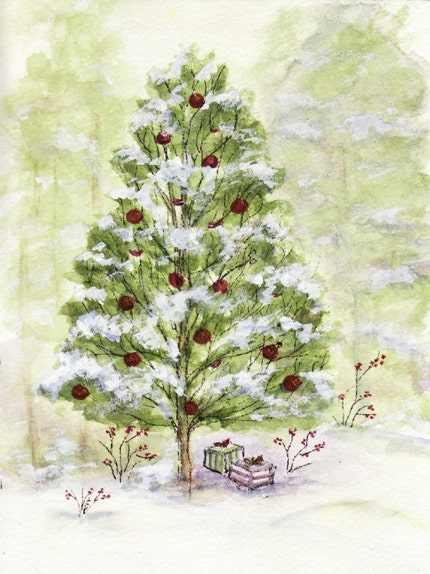


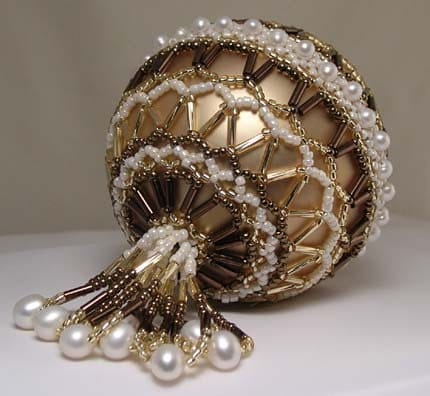

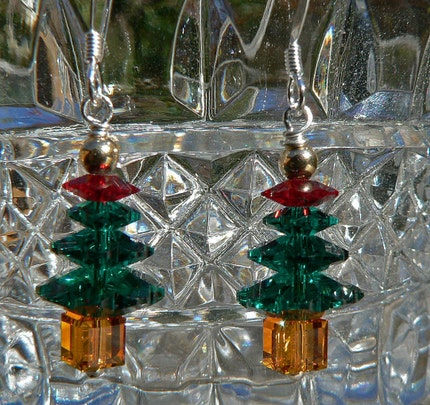


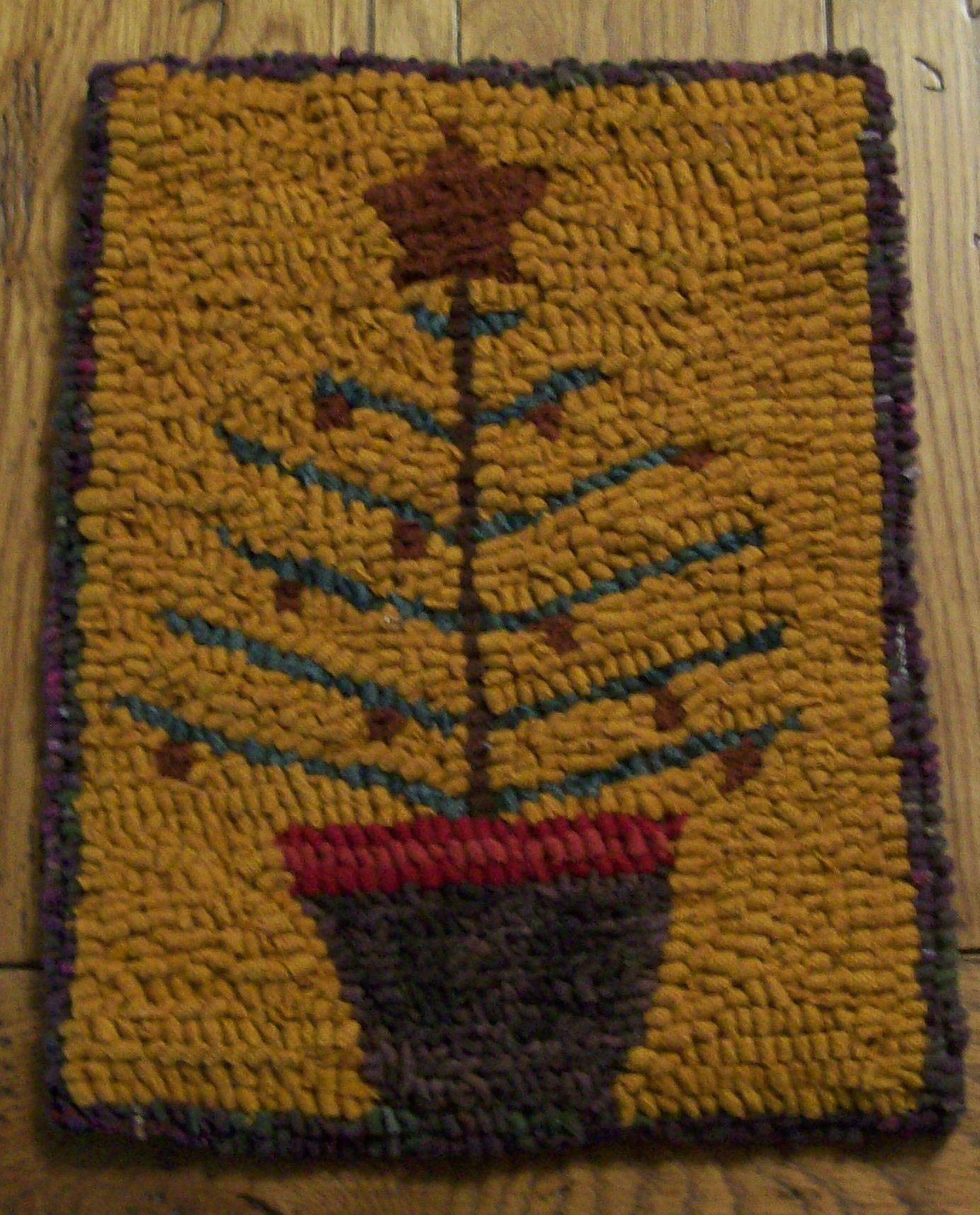


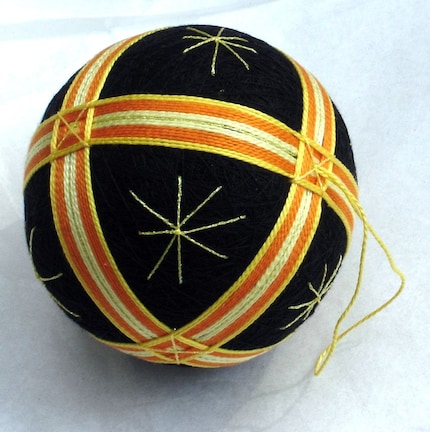


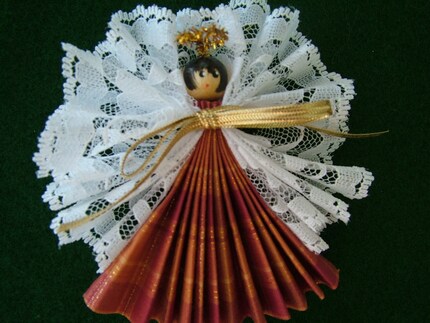
So many beautiful things! I remember singing the German lyrics several years ago. Thanks for the reminder!
I was singing that just the other day! And what a wonderful entry, with so many great finds. I especially LOVE that second beaded ball ornament. Thanks for sharing all the goodies and the story with us!